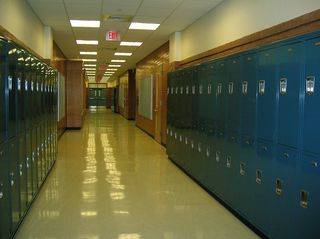Trauma
What Can You Do for Adolescents Exposed to Traumatic Events?
Trauma and Grief-Focused Group Therapy may provide an outlet for healing.
Posted February 17, 2018
In the wake of violent community tragedies which are becoming commonplace in American schools, while lawmakers and advocates alike attempt to find long-term solutions for acts of gun violence, adolescents who have experienced these events need real action and intervention now. Teachers, administrators, and even counselors may feel ill-equipped to handle the casualties stemming from such crises, which include emerging physiological, cognitive, and emotional changes in developing adolescents due to a traumatic event. Becoming familiar with ecologically valid, evidence-based treatments can be a first step in serving as a resource for wounded communities.

Trauma and Grief-Focused Group Therapy for Adolescents (TGCT-A), formerly named the UCLA Trauma Grief Program for Adolescents, is a specialized brief therapy for trauma which primarily addresses how to resolve traumas related to community violence, traumatic loss, and death. The target population of Trauma Grief Component Therapy for Adolescents are adolescent males and females, ranging from 12 to 20 years old. Racial and ethnic group diversity has been considered greatly in the development, research, and implementation of this therapeutic modality. The program has served war-exposed Bosnian adolescents, multi-racial, multi-ethnic middle and high school students from Pasadena, Long Beach, Santee, and Southern California who have witnessed high school shootings and community violence, and adolescents who witnessed or were indirectly exposed to the September 11, 2001, terrorist attacks in New York City. Preliminary trials of the intervention were implemented with adolescents who had been exposed to shootings and community violence in an impoverished urban neighborhood of Inglewood, with gang-affiliated adolescents from the San Fernando Valley, and with adolescents from Armenia who had lived through a massive, destructive earthquake. As noted above, TGCT-A has placed great emphasis on cultural and regional characteristics in developing this brief therapy treatment modality.
Trauma Grief Component Therapy for Adolescents was conceived from a developmental psychopathology model, which means it addresses the complexity of trauma, the interplay between trauma and grief, the influences of life’s challenges, and the influence of trauma on current and future behavior, and aims to restore a healthy developmental progression. TGCT-A also draws on cognitive-behavior theory and social provisions theory. CBT is currently a front-line treatment for most psychiatric disorders, but can be of use for adolescents without any disorders who are simply experiencing problems of everyday living. TGCT-A can be done in individual therapy, in a group therapy setting, and also as part of a family-focused intervention. Additionally, the group context of TGCT-A allows for adolescents who have experienced traumatic events to gather together to create shared meaning from the event, rather than feeling isolated and alone in the whiplash from a traumatic event.

There is research-based, clinical, and qualitative evidence which all confirm that TGCT-A is both valid and reliable in its aim of providing healing and improved functioning to adolescents who have witnessed or experienced traumas, and are likely to develop PTSD-like symptoms or depression if these traumas are not addressed via brief therapy. Three pilot trials without control groups were conducted, in which both sexes received the TGCT-A therapy modality; the ethnic composition of these pilot trials included Latinos, African Americans, Bosnians, Armenians, Hercegovinians, and Caucasians. Another variable taken into account in the three pilot studies with just under 200 adolescent participants was other cultural factors, such as urban, socioeconomically disadvantaged high school students exposed to severe gang violence, war-exposed youths, and 11 to 14-year-old socioeconomically disadvantaged youths across middle and high schools. The clinical trials conducted after the three pilot studies more wisely included control groups. These clinical trials were done by providing TGCT-A brief group therapy to adolescents who had witnessed the September 11, 2001, terrorist attacks in New York City. Following the clinical trials, randomized control trials (RCTs) were conducted. In these RCTs, both control groups who received no therapy beyond what their school or county provided to low-income families and treatment groups who received the TGCT-A group therapy were included.
Following the completion of these studies, several clinicians and researchers unaffiliated with the UCLA TGCT-A program conducted qualitative program evaluations which also showed support for using trauma and grief-focused group therapy with adolescents exposed to traumatic events. To date, no specific case studies in which an independent practitioner who has been trained in TGCT-A and has applied it in an independent practice or school counseling setting have been published (which doesn't necessarily mean there are not many therapists using TGCT-A in schools, only that they are not publishing quantitative studies on using this method); this would greatly add to the body of evidence in favor of this brief therapy for adolescents with trauma, since it would provide practice-based evidence as opposed to the evidence-based practice for TGCT-A which exists today. Since the modality is still fairly new, no studies have been published to date which prescribe modifications to the original framework for how to conduct TGCT-A, and it would be useful to address the limitations of TGCT-A by suggesting modifications to the therapy. One key limitation is that this brief therapy allows for somewhere between 10 and 24 total sessions, but does not outline how TGCT-A may be successfully conducted with adolescents who have experienced multiple trauma stressors and need more than the number of sessions a school may allow.
Since Trauma Grief Component Therapy for Adolescents is highly psychoeducational in nature, a poster-board or white board is recommended so that adolescents in middle or high school group counseling sessions can follow along with session overviews, and so they may use visuals to participate with their peers by presenting the trauma they have experienced. Lane and Saltzman, the primary UCLA investigators and clinicians practicing TGCT-A, have recommended soliciting support from school administrators, teachers, and parents as needed, if this therapy is to be successfully implemented in school-based settings.
Training in Trauma Grief Component Therapy for Adolescents can be obtained by contacting Lane and Saltzman directly. Lane and Saltzman provide a two-day training to licensed clinicians who want to be able to facilitate this type of therapy in a private practice, hospital, county agency, or school setting. Following the training, participants may request ongoing training and supervision from the National Child Traumatic Stress Network and its training department. The training also provides participants with a battery of screening measures, TGCT-A interview protocols, and a 250-page manual and accompanying workbook detailing every step of how to implement the therapy depending on the specific needs of the adolescent client and his or her trauma situation.
Currently, the learning manuals and research studies needed to learn this modality are only available in English and Bosnian, although Christopher Layne and Bill Saltzman, the creators and researchers behind this empirically supported practice are open to translating the modality into other languages. Presumably, a bilingual or trilingual therapist who receives training in Trauma & Grief Component Therapy for Adolescents would be able to translate the basic therapeutic techniques into other languages, which would allow maximal client benefit.
More general research publications on which TGCT-A was based, which also provide a better understanding of how to implement the therapy without necessarily attending a two-day training can be accessed by anyone in the public who may choose to engage with the following articles (listed in the References section).
References
Saltzman, W. R., Layne, C. M., Steinberg, A. M., Arslanagic, B., & Pynoos, R. S. (2003). Developing a culturally-ecologically sound intervention program for youth exposed to war and terrorism. Child and Adolescent Psychiatric Clinics of North America, 12, 319-342.
Saltzman, W. R., Layne, C. M., Steinberg, A. M., & Pynoos, R. S. (2003). School-Based Trauma- and Grief-Focused Intervention for Adolescents Exposed to Community Violence. The Prevention Researcher, 10, 8-11.
Saltzman, W. R., Layne, C. M., Steinberg, A. M., & Pynoos, R. S. (2006). Trauma/Grief-Focused Group Psychotherapy with Adolescents. In Schein, L. A., Spitz, H. I., Burlingame, G. M., & Muskin, P.R., (Eds.), Group Approaches for the Psychological Effects of Terrorist Disasters. New York: Haworth.
Saltzman, W. R., Pynoos, R. S., Layne, C. M., Steinberg, A., & Aisenberg, E. (2001). A Developmental Approach to School-Based Treatment of Adolescents Exposed to Trauma and Traumatic Loss. Journal of Child and Adolescent Group Therapy, 11(2/3), pp. 43-56.


